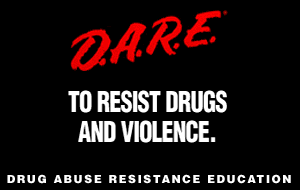Moran: D.A.R.E. is outdated
April 13, 2016
Remember Daren the Lion? He was the mascot for the D.A.R.E. program most kids took in elementary school. On that note, do you remember the D.A.R.E. program and what it taught? About 95 percent of people who took the course don’t.
The D.A.R.E. program is still active today, and let’s be honest, it’s not doing as much as it used to.
The vision of D.A.R.E. was to create “A world in which students everywhere are empowered to respect others and choose to lead lives free from violence, substance abuse and other dangerous behaviors.”
To give some insight, D.A.R.E. was created in 1983 in Los Angeles to fight the high drug usage rates. In 1986, the Drug-Free Schools and Communities Act was passed by Congress, and D.A.R.E. spread like a wildfire.
At first, the 17-lesson course was quite effective. Ironically, once studied, the D.A.R.E. program had no effect and even had an increase in drug, alcohol and cigarette usage after the course had been completed, according to the National Institute of Justice.
Multiple studies disprove the effectiveness of D.A.R.E. Although it may increase relationships among students, teachers and police officers and has a few added benefits, D.A.R.E. is failing to perform its main vision of preventing drug and alcohol usage.
One study by the California Board of Education found that 40 percent of students felt the program had “not at all” influenced them, and 70 percent of students had neutral or negative feelings about the leaders of the program.
Let’s take a step back from all of the statistics and take a look at the program as a whole.
While the D.A.R.E. program has a positive message and may have a few hidden and added benefits, it is failing to prevent children from using drugs, alcohol and cigarettes. It might actually be increasing usage rates.
Granted, kids are quite impressionable. Trying to prevent generation after generation from using drugs and alcohol is not an easy feat. As society continues to plaster drug usage and alcohol consumption in advertising and mainstream media, kids are going to take notice and accept it as the norm.
The National Institute of Drug Abuse posted a study with facts from 2013 relating to drug, alcohol and tobacco usage. The study found that 55.8 million American kids 12 and older were using cigarettes, 22.7 percent of kids between 12 and 20 years old consumed alcohol and 55.8 million American kids 12 and older were using drugs.
In today’s mainstream society, alcohol and tobacco are much more acceptable than in past years, and drug usage is becoming more common. That means D.A.R.E., theoretically, should be more important. The change in culture should result in change in the D.A.R.E. program.
I’m not saying there’s a need to scrap the program all together, but there is a need to seriously reevaluate it. The D.A.R.E. program consumes about $750,000,000 annually. Continuing to spend that insane amount of money is unnecessary, especially when thinking about all of the other ways that money could be used to help other organizations.
D.A.R.E.’s message is positive, and I agree that kids need to learn about alcohol, drug and tobacco usage at some point in their early childhood, but the D.A.R.E. program has often proved to be ineffective. Just because D.A.R.E. worked for one generation doesn’t mean it should keep attempting to make it work for each succeeding generation.
A change in time requires a change in approach. What worked in 1983 is clearly not working now.
Social media has changed the way young people learn about society and consume media, which means tackling the issue of drugs the old fashion way simply won’t work.
Ways to raise awareness and prevent drug, alcohol and tobacco usage still exists, but the D.A.R.E. program isn’t one of those ways anymore.
The D.A.R.E. program needs to be revamped and better tailored for today’s society, but the current program isn’t worth the time or funding it’s been given

















